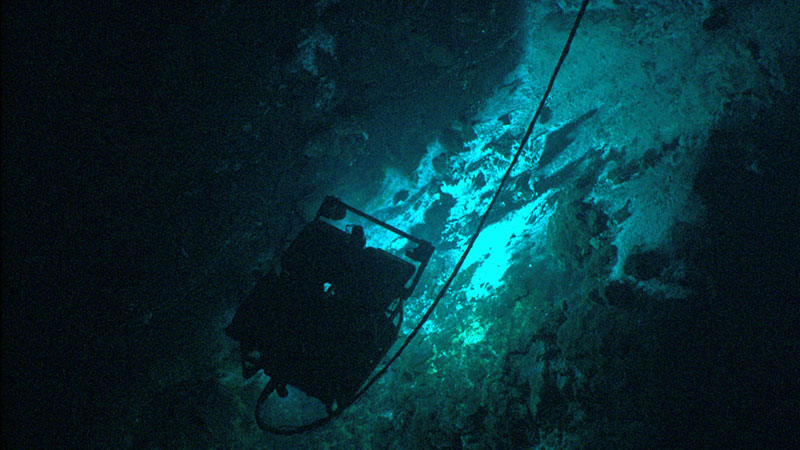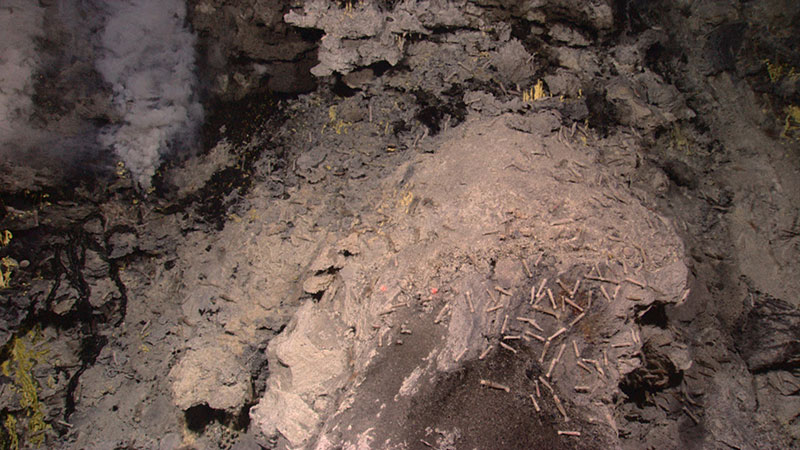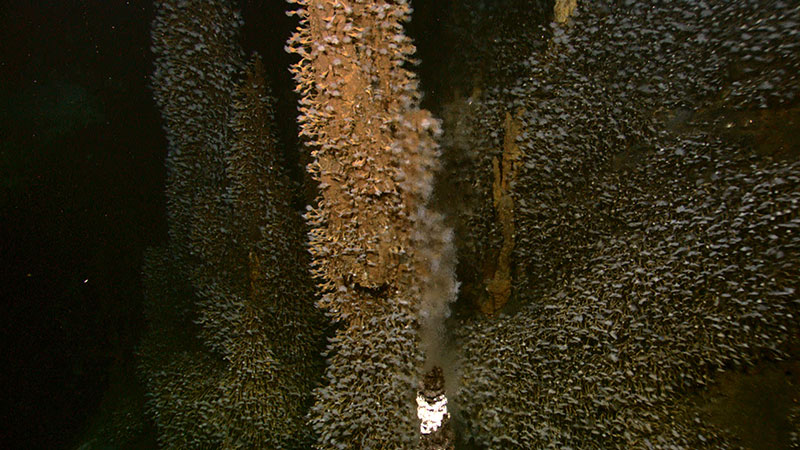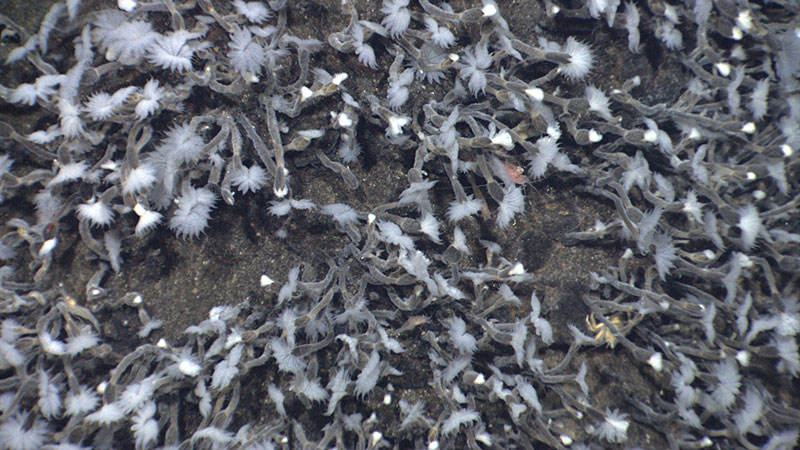
by Verena Tunnicliffe, Marine Biologist, University of Victoria
June 30, 2010
This video shows just some of the stunning imagery captured by the high-definition cameras on the Little Hercules remotely operated vehicle (ROV) on June 30, 2010, during the vehicle's second dive down to Kawio Barat volcano. Video courtesy of the NOAA Office of Ocean Exploration and Research, INDEX-SATAL 2010. Download video (mp4, 73.2 MB).
We are deep in one of the most exotic seas in the world – the centre of the Coral Triangle with the highest diversity of marine animals in the world. The Little Hercules remotely operated vehicle (ROV) is throwing a tiny spotlight onto deep-sea habitats rarely seen before our exploration. As we neared the first hydrothermal venting on the summit of Kawio Barat, the biologists were excited to discover what types of animals would inhabit the vents. Would we see the same animals that occur at vents in other areas of the western Pacific or would these vents have their own special character?

The Little Hercules ROV nears active hydrothermal vent sites on the summit of Kawio Barat submarine volcano. Image courtesy of the NOAA Office of Ocean Exploration and Research, INDEX-SATAL 2010. Download larger version (jpg, 1.7 MB).

The Little Hercules ROV shines its lights on a veritable field of sulphide chimneys and rocks covered with shrimp. In a short period of time, a thriving community over a large area of diffuse venting was revealed. Image courtesy of the NOAA Office of Ocean Exploration and Research, INDEX-SATAL 2010. Download larger version (jpg, 1.6 MB).
The first animals we sighted were clams sparsely scattered over the sediment. But then, as we came into the field of sulphide chimneys, we could see a veritable field of animals and chimneys festooned with barnacles and rocks covered with shrimp. On the chimneys where shimmering flow was higher, we also saw small worms in tubes, large limpets, and snails. It was a thriving community over a large area of diffuse venting.
The barnacles are particularly intriguing. They appear similar to forms seen near Lau and the volcanic arc north of New Zealand. They are a type of goose-neck barnacle that can wave around on a stalk. We watched as their tentacles (‘cirri’) extended like blooming flowers, then folded back into the shell. We know from similar animals at other hot vents that the white fluff on the cirri are filaments of bacteria that grow in the passing vent water. The barnacles hold out the cirri to grow the bacteria then, apparently, withdraw to “lick their fingers.” The overall effect of thousands of blooming barnacles was quite stunning.

Sulphide chimneys on Kawio Barat were completely covered with barnacles. Image courtesy of the NOAA Office of Ocean Exploration and Research, INDEX-SATAL 2010. Download larger version (jpg, 1.8 MB).

The barnacles are a type of goose-neck barnacle that grow on a stalk. The white fluff on the cirri is filaments of bacteria that grow in the passing vent water. The barnacles hold them out to improve growth then, apparently, withdraw to “lick their fingers.” Image courtesy of the NOAA Office of Ocean Exploration and Research, INDEX-SATAL 2010. Download larger version (jpg, 1.6 MB).
Our first impression is that there is much more to learn here – about the animals and their habitat. We see crabs but what species? We see vent worms but are they the same as those from Lau Basin? And we see shrimp...not immediately recognizable even to the shrimp experts. These stars of the Celebes hot vents will await further exploration and study.